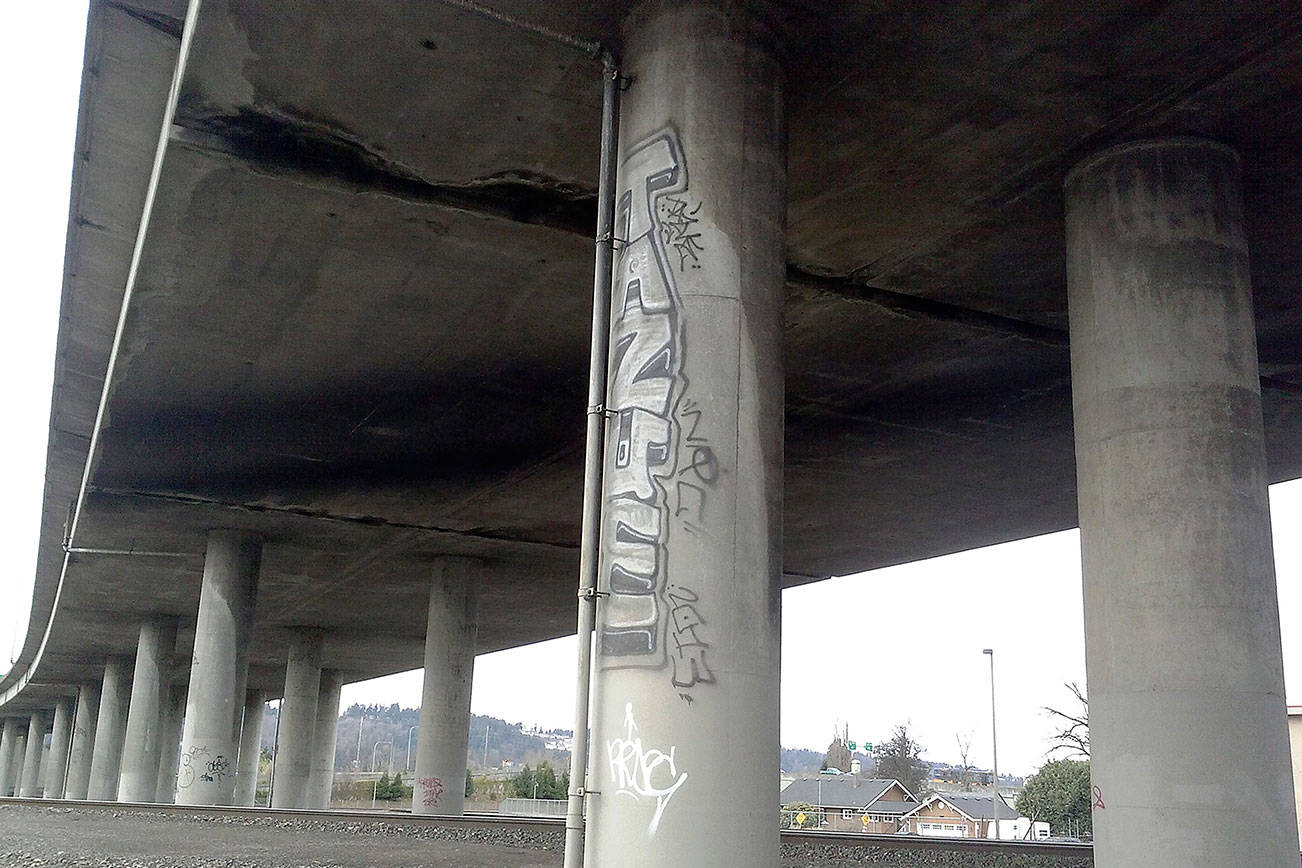The spray-can wielding guys so hot to deface fences, walls and properties with graffiti keep Auburn Police and the City’s code enforcement guys busy.
Dancing to the tune of 20 to 30 incidents a month.
And when the weather’s warm and dry, there can be as many as 15 new incidents a week.
That’s a lot to handle.
That, according to Auburn Police Officer April Steinman and City Code Enforcement Officer Chris Barack, who spoke to the City Council at City Hall on Monday night.
In Auburn as elsewhere, graffiti is a serious problem, on the flat and in the hills. It debases neighborhoods, reduces property values, and in general trashes the place out. Not only does graffiti shatter a neighborhood’s sense of security, it hurts neighborhood pride, sapping the willingness of property owners to keep up their houses and the quality of life in the neighborhood.
What matters more, graffiti is often a sign that gangs are moving into a neighborhood, trying to establish their turf.
But it’s not always gangs.
Steinman said the mix between gang-related tagging and artist expression graffiti breaks to about 75 percent gang-related and 25 percent artistic statement.
“How do you monitor and stay on top of that,” asked Councilman Bill Peloza, curious about the graffiti he’s seen underneath Porter Bridge.
“By report,” Barrett responded. “With the amount of square footage we have throughout the city, it would be near impossible … to (respond) on a daily and weekly basis. There are certain hot spots we have in town we will check on a daily basis. If it starts to become a pattern, that’s a way we can keep on it. In my time with the city the last 4½ years, we have only had a handful of reports for underneath that bridge.”
Graffiti entered the civic conversation again at a recent study session, when Councilwoman Yolanda Trout-Manuel expressed her disgust at seeing all the graffiti, particularly as it manifests its ugly presence under the M Street bridge.
So sick, Trout-Manuel suggested on that occasion, the City should consider installing a few cameras under the bridge, to catch the bad guys in mid-spray and encourage them to sheath their cans.
In Seattle, the powers-that-be have taken walls that were the source of constant tagger attention and asked artists to come out and paint beautiful scenery on them.
“We want to get on top of it right away, that way we can get out there, show to the community generally that it’s somebody who lives in that area who is doing the tagging,” Barack said. “And when (the taggers) see code enforcement and law enforcement out there covering that graffiti, it’s discouraging. We probably have a better paint supply than they do.”



